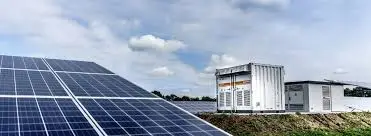Is Battery Technology Hindering the Green Energy …
April 14, 2018

What does an ideal Battery Energy Storage Site (BESS) look like?
With the UK aiming for renewable energy to reach half of all energy consumed by 2030, there has been a steep rise in the demand for land suitable to host renewable energy developments.
One of the largest challenges with renewable energy generation is that it’s intermittent and does not always generate electricity in line with periods of high demand. A key technology in managing this gap between generation and demand are Battery Energy Storage Sites (BESS). These can charge fromthe gridwhen there’s an abundance of renewable electricity during peak generation periods and then discharge back onto the grid when there’s a shortfall in supply.
By leasing land for an energy storage asset, landowners can secure a long-term, stable income. They are able to diversify their income streams while playing a role in the UK’s journey to net zero. A landowner faces very low levels of risk on incurring costs during a project in partnership with a developer relative to self-developing a project, and can often achieve rents surpassing agricultural rents.
Land suitability
The land requirement varies, BESS projects can be as small as two acres, or as large as 30 acres. Typically, BESS developers look for between two to 15 acres of relatively flat-lying land.
Battery sitesshould be located near to existing infrastructure and in areas that minimise the impact on nearby residential properties. This is due to the potential for a BESS project to increase the level of background noise which can be mitigated utilising methods such as acoustic fencing and a selective choice of battery manufacturers.
Grid connection availability
Key to a success is securing a financially viable grid connection. The UK’s grid network is currently constrained to a point that viable connections are becoming harder to obtain. The value of a grid connection varies significantly relative to its connection date. Grid connections with dates within three to four years are considered significantly more valuable than those eight to 10+ years away.
In an ideal scenario, the grid connection would be located on the land in question as they are considered more favourable in planning, while also reducing the cost of an extended cable run. Properties that qualify for battery storage leasing are ideally located adjacent to a substation. If the connection is near your land but not on it, a third party agreement may be required, adding complexity and costs to the developer. However, this will not necessarily negate land from being selected for battery development.
Land status
Protected land
Ideally, the land should not be adjacent to or located within a national park, nature reserve, or site of special specific interest – though there may be exceptions in some cases.
Agricultural land classification
As outlined in the NPPF, planning guidance favours land that is not higher-quality agricultural land preserved for farming (known as “best and most versatile” land in England and Wales, and “prime” agricultural land in Scotland). This is often considered grade one and two land, however, there may be some instances where there is limited access to ideally suitable land and as such a battery development may be considered.
Flood zones
It’s also preferred that the potential land is outside of a flood zone. That said, it’s possible to develop in flood zones one and two (where there is a low or medium probability of flooding), subject to a flood risk assessment and design mitigations as necessary.
Despite the challenges associated with finding viable sites for BESS, identifying and utilising this land is a crucial component in the UK’s journey towards net zero.
Comments
Write a comment